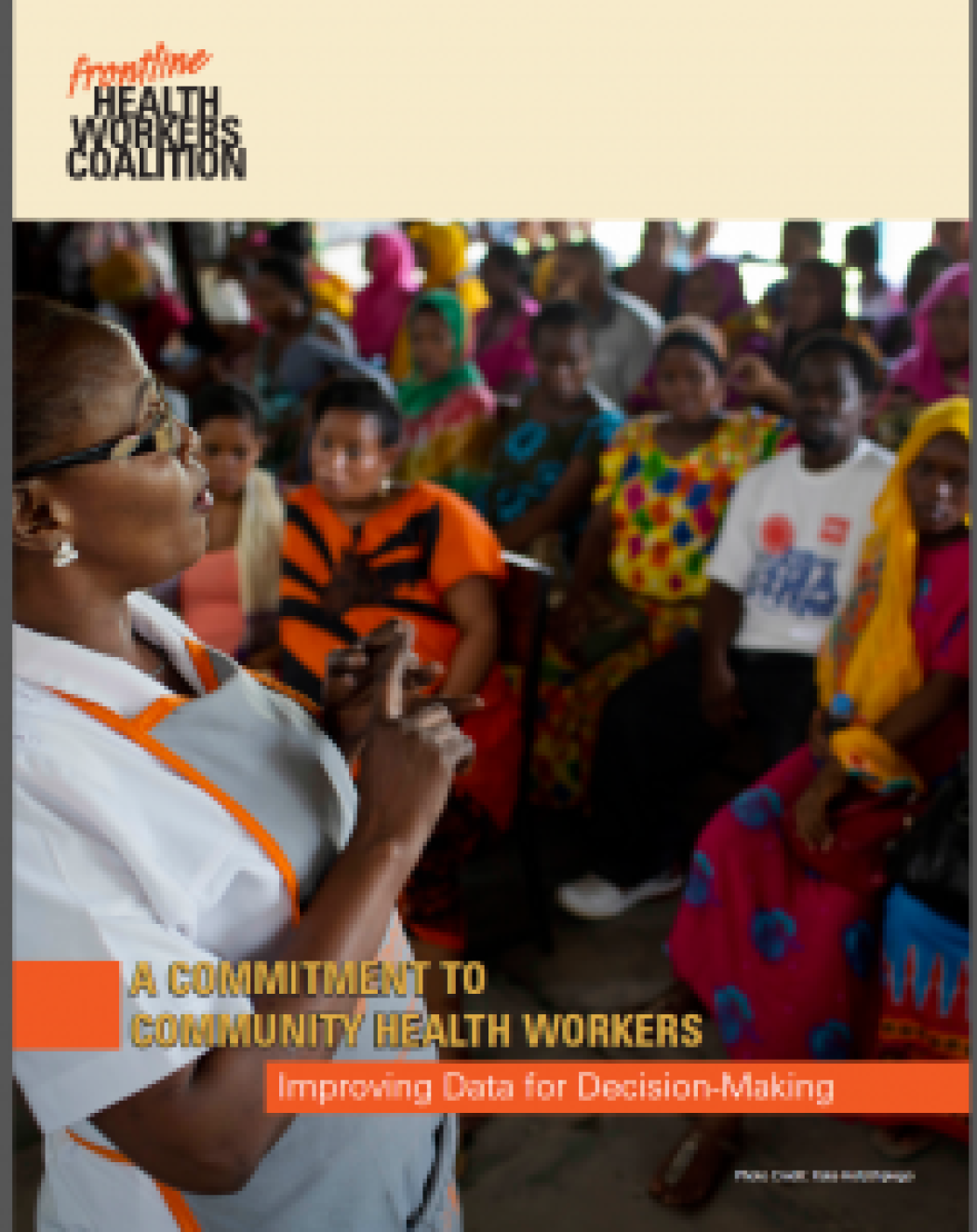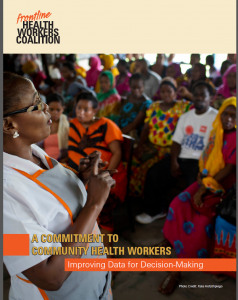New Report: Why We Need Better Data on Community Health Workers

By Julia Bluestone, Jhpiego and Frontline Health Workers Coalition
 Community health workers are highly visible to the families they serve, walking to houses, delivering basic but essential health information and care to mothers and children. But within established health systems, these health workers are largely an "invisible cadre." They are often not counted, and when not on an official payroll, not tracked in any national human resource information system. That’s a lost opportunity to impact a health system countrywide. When community health workers have been rationally integrated in national health systems – like in Ethiopia, Malawi and Nepal – the evidence shows they have helped lead to significant progress in achieving their health Millennium Development Goals.
Community health workers are highly visible to the families they serve, walking to houses, delivering basic but essential health information and care to mothers and children. But within established health systems, these health workers are largely an "invisible cadre." They are often not counted, and when not on an official payroll, not tracked in any national human resource information system. That’s a lost opportunity to impact a health system countrywide. When community health workers have been rationally integrated in national health systems – like in Ethiopia, Malawi and Nepal – the evidence shows they have helped lead to significant progress in achieving their health Millennium Development Goals.
In a new report released on the sidelines of the United Nations General Assembly in New York, the Frontline Health Workers Coalition calls for a systematic approach to assessing the extent of this workforce and its impact on health. The report recommends health workforce stakeholders look to the International Labour Organization “community health worker” definition and the ILO recommended set of core tasks in order to establish global consensus on a common definition, set of core tasks and competencies. The report, titled A Commitment for Community Health Workers: Improving Data for Decision Making, is supported by Johnson & Johnson and endorsed by 17 FHWC members and partners.
To enhance the quality and availability of data for decision-making, the report also calls for the creation of guidelines for a minimum data set of information on CHWs and exploring the use of national registries to capture and integrate data into national human resources information systems. The 2014 State of the World’s Midwifery report found that, in 79% of countries surveyed, midwives supervised CHWs concerning sexual, reproductive, maternal, and newborn health, suggesting that countries often informally integrate CHWs into the health system. A commonly accepted definition, agreed-upon understanding of core tasks and competencies, and minimum data set will help national ministries make data-driven decisions on how best to integrate these CHWs into health systems and collect and document best practices and impact-driven results.
The goals of ending preventable maternal and child deaths, achieving an AIDS-free generation, achieving global health security, filling unmet needs for family planning, and a whole host of other global health goals cannot, and will not, be achieved without the commensurate and rational workforce, with appropriate skill mix and rational sharing of tasks.
Read the full report online at frontlinehealthworkers.org/CHWreport/ and to join us tomorrow, Tuesday Sept. 23 from 9-11:30 am for an ideation session on improving health workforce data collection and use. The session will be livestreamed at new.livestream.com/JNJGlobalHealth/HealthWorkers and includes a virtual breakout session where we will be discussing the role of CHWs online. Please join us!
